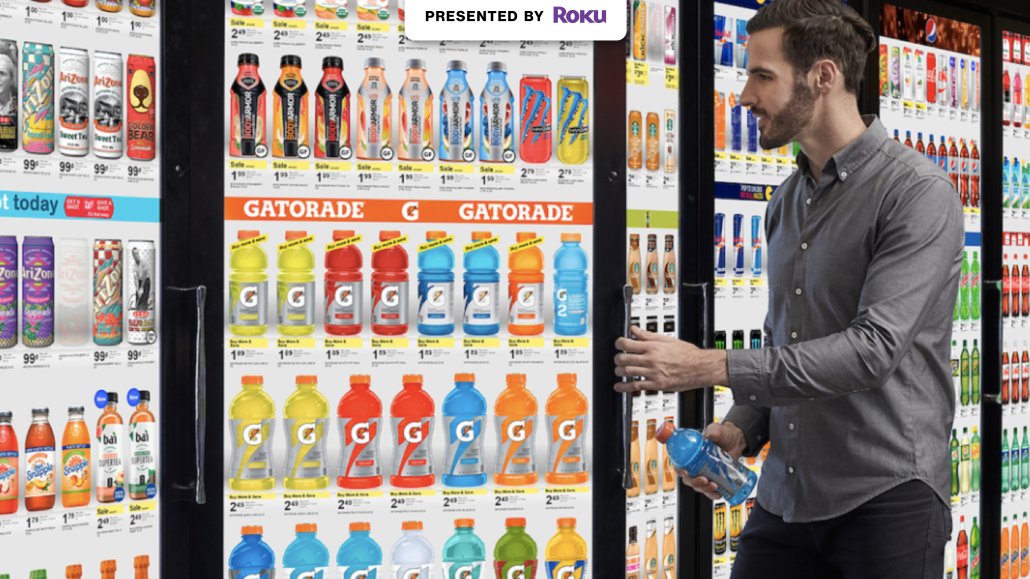‘No better context’: Cooler Screens’ founder and CEO Arsen Avakian on returning to in-person networking

Digital in-store retail media company Cooler Screens — the company behind the tech to put ads on screens for refrigerator doors in retailers like Walgreens and grocers like Kroger — has increased its footprint since the onset of the pandemic. The company now has some 10,000 screens on cooler doors in 750 retail locations that together generate over 77 million monthly views. That increase in footprint has Arsen Avakian, founder and CEO of Cooler Screens, more confident about introducing the product to advertisers at his first Advertising Week, which is taking place this October 18th to the 21st in New York and online.
Digiday caught up with Avakian to hear how the company is approaching the hybrid festival as well as the return of in-person networking, retail media and the supply chain issues hammering companies today.
This conversation has been edited and condensed for clarity.
Advertising Week is one of the first major industry events to do a hybrid in-person and virtual event. What do you think about the return of in-person networking?
I just came back from the DPAA show last week. I was pleasantly surprised. It was the first ad industry show I went to post-COVID. I didn’t know what to expect but there was a room full of people who seemed comfortable. I think there’s a pent-up need for the [in-person] exchange of ideas, building of relationships. They were very strict on the vaccination proof. They took a very black and white approach that if you wanted to be in-person you had to show vaccination proof.
Has the pandemic changed how people think about Cooler Screens or changed your pitch for Cooler Screens to advertisers?
People have realized how much retail matters. Even though e-commerce was initially the “save the day” player [when the pandemic began], people look back and realize that if it weren’t for places like Walmart and Kroger they wouldn’t have made it through COVID. That dispelled the myth that brick-and-mortar was dead. It’s alive and kicking. When that’s coupled with other [advertising] trends of the last 18-months — the privacy regulations, the death of the third-party cookie — people realized that retail media is truly the next big thing.
Retail media has been on the rise for years. Why do you say it’s the next big thing?
Retail media, the early definition was all around Amazon, e-commerce marketing has now morphed and evolved into something far bigger with the in-store and the dot com being together in one. We feel we need to take a leadership position in helping define what retail media is — we’ve talked with folks at the IAB and they see it as e-commerce only; we’ve talked to the folks ad DPAA and they only think about the traditional OOH world and they’re not thinking about the dynamics of in-store. With privacy regulations and the cookieless [future], brands are now trying to understand how they connect in a safe way with actual people so I think some [traditional] advertising concepts will come back that make retail media even more valuable.
How so?
When you’re connecting with shoppers in stores you’re connecting with real people — you’re no longer worried about whether the ad showed up in front of real people or bots. The reliability of traditional internet marketing has been questioned from the safety perspective, verification perspective, engagement perspective. These issues in a physical store world of retail media are gone. People are buying things and want to engage with brands. That’s driving an important excitement for the future of contextual targeted versus individual identity-based targeting. There is no better context than being in a moment of shopping when you are making those decisions. The content, commerce and context trifecta is very powerful and it defines the retail media of the future.
Given the supply chain issues many brands are facing, how do you think that will impact Cooler Screens?
We have a sensor technology to monitor the stock on the shelf to help our brand partners. A lot of brand partners are saying they don’t want to advertise when their product isn’t consistently on the shelf. They don’t want empty impressions or to waste money [on something that’s out of stock]. If you have a product on the shelf then you advertise. If you don’t then you can save your money. Or you can change the messaging to be more brand [building] versus [product-oriented]. These brands are really stressed today with their supply chain problems and advertising platforms, the industry should be helping these companies solve these issues.
More in Marketing

Pitch deck: How Amazon is recasting Twitch as a core part of its CTV pitch
Amazon is positioning Twitch as a defining asset in its CTV ambitions.

Netflix transforms former mall department stores into experiential venues
The location in Dallas opens this week, and one at the King of Prussia mall near Philadelphia opened last month.

Future of Marketing Briefing: AI has created a new talent paradox in programmatic agencies
The job isn’t execution anymore. AI handles that. The job is judgement.





